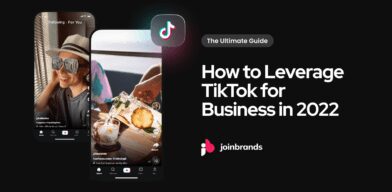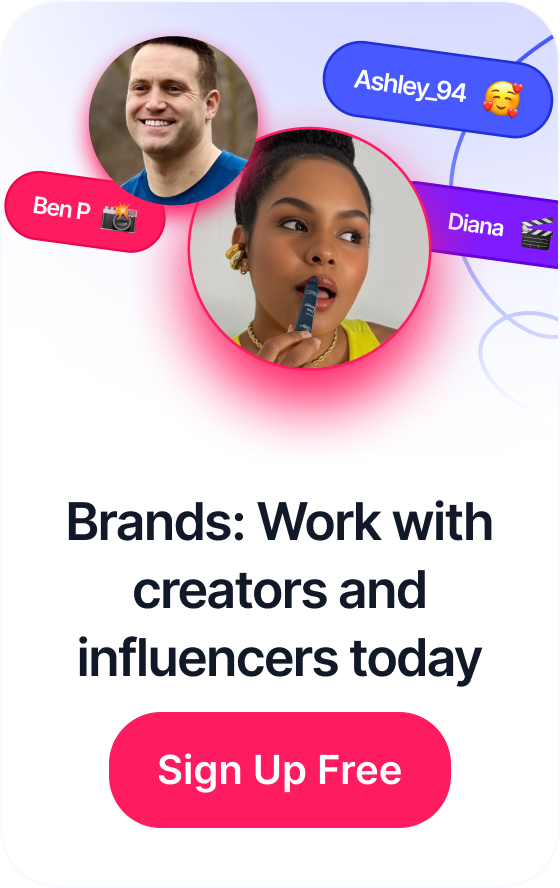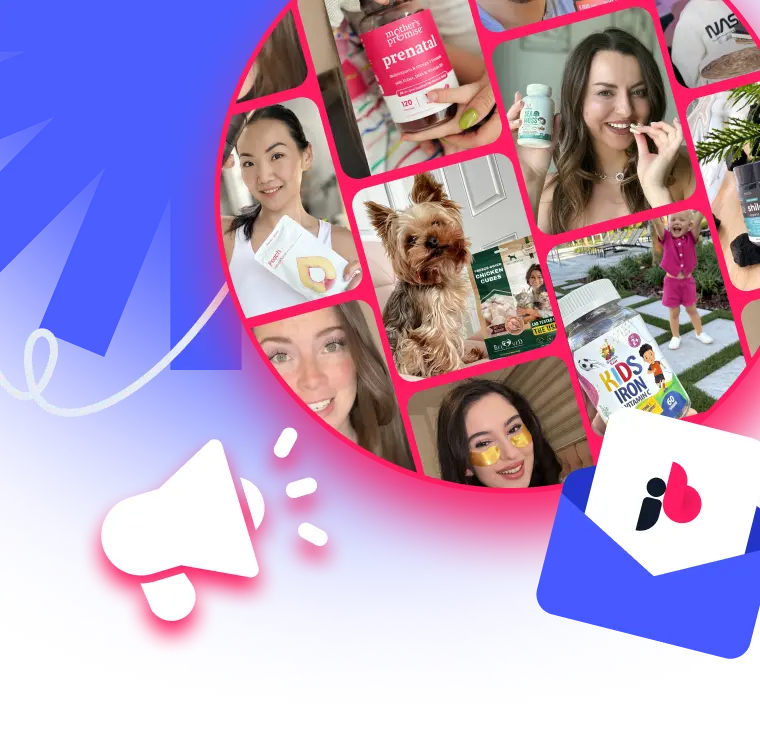 Your Step-by-Step Guide to Using TikTok as a Brand
Your Step-by-Step Guide to Using TikTok as a Brand
TikTok ads are short video advertisements displayed on the TikTok platform. They are significant due to TikTok’s vast user base of over 1 billion active users, offering extensive reach. These ads can help brand owners effectively promote and sell their products by tapping into a diverse and engaged audience.
This article guides us through the different types of TikTok ads. Next, we’ll look at how to run TikTok ads as well as discuss how much they cost. Next, we’ll look at some TikTok ads done right as well as the best practices to employ when running TikTok ads. We’ll end by answering some frequently asked questions (FAQs).

Table of Contents
5 Types of TikTok Ads
TikTok offers various ad formats, each with unique features that cater to different advertising needs:
1. In-Feed Ads
These are full-screen video ads that appear in the user’s “For You” page. They blend in with organic content, offering a seamless viewing experience. For a small boutique, an In-Feed Ad could showcase their latest clothing collection, encouraging viewers to swipe up to shop directly from their website. This ad type is effective for driving traffic and conversions due to its native appearance and direct call-to-action capabilities.
2. TopView Ads
TopView Ads are the first thing users see when they open TikTok. They are full-screen, sound-on, and can last up to 60 seconds, offering maximum exposure. A local restaurant could use a TopView Ad to highlight their signature dishes or a special offer, capturing the audience’s attention as soon as they open the app. This format is ideal for brand awareness and reach.
3. Branded Hashtag Challenges
These involve creating a sponsored hashtag and encouraging users to create content around it. It’s highly interactive and fosters user-generated content. A fitness center, for example, could launch a workout challenge under a unique hashtag, encouraging TikTok users to participate and share their workout videos. This type of ad is great for engagement and viral potential.
4. Branded Effects
Similar to Snapchat’s lenses, Branded Effects allow brands to create custom filters, stickers, and AR effects. A cosmetics brand could develop a branded filter allowing users to virtually try on makeup. This is an engaging way to enhance user experience and increase brand interaction.
5. Brand Takeovers
These are full-screen static or dynamic displays, showing up when a user first opens TikTok. It can link to a webpage or a Hashtag Challenge within the app. For instance, a tech gadget store could use a Brand Takeover to announce a new product launch or a limited-time offer, ensuring high visibility among TikTok users.
Each type of TikTok ad offers unique benefits, from driving engagement and user interaction to enhancing brand visibility and direct conversions. Businesses can choose the format that best aligns with their marketing goals and target audience. Now let’s discuss how you can run ads on TikTok.
14 Steps to Run Ads on TikTok
Running ads on TikTok involves a series of steps that allow businesses to effectively target their audience and achieve their marketing goals.
Here’s a guide for business owners on how to run ads on TikTok:
1. Create a TikTok Ads Account
First, you need to set up a TikTok Ads account by visiting the TikTok Ads homepage and signing up. Provide your business details, including your business name and billing information. For example, a small coffee shop owner would create an account, inputting their café’s details and payment information. This initial setup is crucial for accessing TikTok’s advertising platform.
2. Define Campaign Objectives
Once your account is set up, start by creating a new campaign and defining its objectives. TikTok offers various objectives like traffic, app installs, and conversions. A clothing retailer, for instance, might choose ‘Conversions’ as their objective to drive sales on their website. Choosing the right objective aligns your campaign with your business goals.
3. Set Up the Ad Group
In the ad group settings, you can specify targeting options, budget, schedule, and bidding strategy. Targeting options include demographics, interests, and behaviors. For instance, a bookstore can target users interested in reading and literature, set a daily budget, and choose a cost-per-click bidding strategy. Accurate targeting ensures your ad reaches the most relevant audience.
4. Create Your Ad
Next, create your ad content. You can upload videos or images, and add ad texts and call-to-action buttons. An artisan jewelry store could upload a visually appealing video showcasing their handcrafted pieces, with text highlighting unique features, and a ‘Shop Now’ button. Engaging and high-quality ad content can significantly impact the success of your campaign.
5. Launch and Monitor the Campaign
After setting up the ad, launch your campaign. Continuously monitor its performance through TikTok’s analytics to see metrics like impressions, clicks, and conversions. A local gym running ads could track how many sign-ups they’re receiving from the campaign. Regular monitoring and adjustments based on performance data are key to maximizing the effectiveness of your TikTok ads.
6. Optimize Your Campaign
Based on the performance data, make necessary adjustments to optimize your ad campaign. This could involve tweaking the targeting options, adjusting the budget, or refining the ad creatives. A skincare brand, noticing higher engagement from a particular age group, might adjust their targeting to focus more on that demographic.
7. Evaluate and Adjust Bidding Strategy
Regularly assess the effectiveness of your bidding strategy. TikTok offers various bidding options like cost-per-click (CPC) or cost-per-thousand impressions (CPM). A tech gadget store, noticing a high cost per acquisition, might switch from CPC to CPM to increase ad visibility and optimize spending.
8. Utilize A/B Testing
Implement A/B testing to determine the most effective ad elements. This involves creating two versions of an ad with one varying element, like the ad creative or call-to-action. For example, a beauty brand might test two different ad visuals to see which yields higher engagement, refining their strategy based on the results.
9. Incorporate User Feedback
Pay attention to user comments and feedback on your ads. This qualitative data can provide insights into user preferences and ad reception. A home decor business might adjust their ad content based on user feedback about their product range or ad appeal.
10. Explore Advanced Targeting Options
Dive deeper into TikTok’s advanced targeting options like custom audiences and lookalike audiences. A fitness app could create a custom audience from their website visitors and a lookalike audience to reach similar users, enhancing the precision of their ad targeting.
11. Leverage TikTok’s Creative Tools
Utilize TikTok’s creative tools and features to enhance your ads. These include various filters, effects, and editing options. A restaurant promoting a new menu might use eye-catching effects in their ad to make the food visuals more appealing.
12. Keep Up with TikTok Trends
Stay updated with the latest TikTok trends and consider integrating them into your ads for relevance. A fashion retailer could incorporate a trending song or challenge into their ad, making it more relatable and engaging for the TikTok audience.
13. Use TikTok’s Collaborative Ads
Consider using TikTok’s Collaborative Ads, which allow you to partner with influencers to promote your products. A sports equipment brand could collaborate with a fitness influencer, leveraging their followers for broader ad reach.
14. Continuously Learn and Evolve
Continuously learn from your experiences and stay informed about new features and best practices on TikTok. Regularly attending webinars, following industry blogs, and analyzing competitors can provide valuable insights for evolving your strategy.
By following these steps, business owners can effectively utilize TikTok’s advertising platform to reach their desired audience, enhance brand visibility, and achieve their marketing objectives. Now, let’s delve into how much TikTok ads cost.
How Much Do TikTok Ads Cost?
The pricing of TikTok ads varies based on several factors, including ad format, bidding method, and campaign objectives. Here’s a breakdown of the prices and bidding methods available on TikTok:
General Cost Overview
The general starting cost for TikTok ads is around $10 per CPM (cost per thousand views). However, the total cost of a campaign will depend on various factors such as ad format, targeting, and competition.
Minimum Campaign Spend
TikTok generally requires a minimum campaign spend of $500, which ensures a substantial reach and effectiveness for the ad campaign.
Bidding Methods
TikTok offers several bidding methods to suit different campaign objectives and budgets:
Cost Per Click (CPC)
This method is ideal for driving website traffic or app downloads. You only pay when someone clicks on your ad. The cost varies depending on the competition for your target audience.
Cost Per Mille (CPM)
Suitable for brand awareness campaigns, where you pay per thousand impressions. This is more about reach and less about direct engagement.
Cost Per View (CPV)
Used primarily for video views, where you pay when your video ad is viewed for a certain duration. The price depends on how engaging your content is and the audience targeted.
Optimized Cost Per Mille (oCPM)
Automatically optimizes your bids for conversions, ideal for conversion-focused campaigns. The system adjusts bids to maximize the outcome based on your budget.
Ad Formats and Pricing
Different ad formats may have different pricing structures:
In-Feed Ads
These usually follow a CPM or CPC model, with costs varying based on targeting and competition.
Brand Takeover Ads
Being premium ad placements, these are typically more expensive and often require a higher minimum spend.
Branded Hashtag Challenges
The cost of these campaigns can be higher due to their viral nature and wider reach.
Factors Influencing Cost
The cost of TikTok ads is influenced by factors such as the target audience’s demographics, the time of year (with higher costs during peak seasons), and the overall demand for ad space in your chosen category.
It’s important for businesses to align their budget with their marketing objectives and choose the bidding method that best suits their campaign goals. Due to the dynamic nature of TikTok’s advertising platform, prices and availability of certain features may change, so it’s advisable for advertisers to check the latest information on TikTok’s advertising platform.
Now, let’s take a look at some examples of TikTok ads done right.
Examples of TikTok Ads Done Right
These TikTok advertising examples showcase effective strategies as they highlight user engagement, authenticity, creativity, and storytelling.
Examples of TikTok ads done right include:
- Chipotle’s #GuacDance Challenge
- e.l.f. Cosmetics’ #eyeslipsface Campaign
- Gymshark’s Fitness Challenges
- NBA’s Behind-the-Scenes Content
- Levi’s Partnership with TikTok’s Shop Now Feature
- ASOS
- Last Minute
- Chipotle
- Gymshark
- FC Barcelona
- Maybelline
- PepsiCo Australia
- Colombiana Boutique
- Magalu
- Koala
Let’s discuss these TikTok ads in more detail:
1. Chipotle’s #GuacDance Challenge
Chipotle’s #GuacDance Challenge is a prime example of TikTok advertising done right. They created a branded hashtag challenge encouraging users to show their love for avocados and guacamole. The campaign coincided with National Avocado Day, making it timely and relevant. It resulted in a record-breaking number of guacamole orders, demonstrating the power of aligning a campaign with a specific event and engaging users through interactive content. The success of this campaign shows the effectiveness of user-generated content and timely, relevant hashtag challenges.
2. e.l.f. Cosmetics’ #eyeslipsface Campaign
e.l.f. Cosmetics launched the #eyeslipsface campaign, leveraging TikTok’s strength in music and creativity. They created an original song that became viral, encouraging users to create their own videos using the song while showcasing e.l.f. products. The campaign generated millions of views and created a strong brand association with the catchy tune. This approach highlights the importance of original, catchy content and leveraging TikTok’s musical nature to boost brand engagement.
3. Gymshark’s Fitness Challenges
Gymshark effectively utilized TikTok ads by launching fitness challenges and encouraging user participation. Their campaigns often involve fitness influencers and engage the community with specific workout routines or challenges. This strategy not only promotes their fitness apparel but also aligns with their brand identity of encouraging a fit lifestyle. Gymshark’s success demonstrates the value of community engagement and content that aligns with brand values.
4. NBA’s Behind-the-Scenes Content
The NBA utilizes TikTok to share behind-the-scenes content, including highlights, player workouts, and fun moments. This approach makes the brand more relatable and engaging, particularly to a younger audience. Their TikTok content feels authentic and less like traditional advertising, which resonates well with the platform’s user base. The NBA’s strategy shows the importance of authenticity and offering exclusive, engaging content.
5. Levi’s Partnership with TikTok’s Shop Now Feature
Levi’s collaborated with TikTok to use the ‘Shop Now’ feature, which allowed users to purchase products directly through the app. They combined this with influencer collaborations to showcase their products in a natural and engaging way. This campaign effectively bridged content and commerce, demonstrating the potential of TikTok’s e-commerce features.
6. ASOS
ASOS utilized TopView ads on TikTok for their Branded Hashtag Challenge, encouraging users to show off their favorite outfits. The campaign integrated engaging, interactive content, which was promoted through both TopView and In-Feed ads to maximize reach. ASOS’s use of established TikTok creators to initiate the campaign and the subsequent collection of user-generated content (UGC) significantly increased participation. This strategy resulted in a staggering 1.2 billion video views in 6 days and a 15.79% engagement rate, demonstrating the effectiveness of interactive challenges and creator partnerships in driving brand engagement.
7. Last Minute
This travel brand’s TikTok campaign was unique and creative, focusing on a fictional product called ‘Holiopathy’ to encourage holiday bookings. The TopView ad format was utilized for maximum visibility, featuring a colorful and engaging video. The campaign’s distinct approach, avoiding generic marketing messages and instead using humor and creativity, led to 10.5 million impressions and an 18% CTR. This highlights the importance of originality and creative storytelling in capturing the attention of a younger audience.
8. Chipotle
Chipotle’s strategy on TikTok revolves around a casual and authentic approach, including dance challenges, fan-made content, and behind-the-scenes footage. Their focus on real experiences, such as videos from actual crew members, helps to build a genuine connection with the audience. This strategy showcases the power of relatable and personable content in creating brand loyalty and community engagement on social media platforms.
9. Gymshark
Gymshark achieved rapid growth on TikTok by leveraging influencer marketing and creating content that resonates with fitness enthusiasts. Their campaigns, such as the #gymshark66 challenge, encouraged users to document their fitness journeys, fostering community participation and engagement. This approach of utilizing relatable fitness challenges and influencer partnerships effectively drove brand awareness and created a loyal follower base, as evidenced by the 193 million views generated by the campaign.
10. FC Barcelona
The soccer club launched the #GoForItChallenge on TikTok, encouraging users to submit creative videos showcasing their skills. This campaign was not only engaging but also allowed fans to interact with their favorite team in a unique way. The use of a specific hashtag and the challenge format led to high user participation, with over 70,000 users submitting almost 200,000 videos. The engagement rate reached an impressive 12.05%, highlighting the effectiveness of interactive and fan-centric campaigns in fostering brand loyalty and audience engagement.
11. Maybelline
For the launch of their new product line in Vietnam, Maybelline used a Branded Hashtag Challenge (#Maybeli) along with a dedicated music video. This innovative approach made the campaign highly engaging and memorable. The challenge encouraged user participation, resulting in the creation of 75,000 videos and reaching 19 million users. Notably, the campaign achieved more than 173 million views and a significant increase in online sales, demonstrating the power of integrating music and challenges in marketing strategies.
12. PepsiCo Australia
To introduce new flavors of Pepsi Max, they executed a campaign combining In-Feed ads with Brand Takeover on TikTok. This approach provided high visibility and an engaging user experience. The campaign achieved a remarkable click-through rate (CTR) of 24% on the first day and reached 2.4 million users. By its conclusion, the campaign amassed over 10 million impressions and a 17% overall CTR, showcasing the effectiveness of combining different ad formats for maximum impact.
13. Colombiana Boutique
This boutique used TikTok’s Shopify Pixel and Hashtag Targeting tool to optimize its ad campaign. They created diverse, original video ads with upbeat music and positive testimonials. Despite a modest budget, their campaign was successful, with over 53,000 video views and an engagement rate of 3.70%, demonstrating the effectiveness of targeted advertising and the use of e-commerce integrations on TikTok.
14. Magalu
To promote their Black Friday Sale, Magalu combined Top View Ads and Brand Takeover in a week-long TikTok campaign. They created visually striking and colorful video ads with catchy audio. The campaign was a success, achieving 200 million video views and attracting a high percentage of new users, illustrating the impact of visually engaging content and strategic ad placement.
15. Koala
Australian mattress brand Koala created TikTok ads that looked native to the platform, featuring elements like humor and familiar background music. Their approach made the ads relatable and engaging, resulting in a 14% increase in the efficiency of Cost Per Click (CPC). This example underscores the importance of creating content that aligns with the platform’s native style to enhance user engagement and ad performance.
Now that we’ve looked at some of the best examples of TikTok ads, let’s learn from them and derive the best TikTok advertising practices.

20 Best Practices for Advertising on TikTok
Advertising on TikTok requires understanding the platform’s unique dynamics and audience preferences. Here are some best practices for advertising on TikTok:
1. Create Authentic and Relatable Content
TikTok users prefer authentic, relatable content over polished, traditional ads. Content that feels genuine and engaging resonates better with the audience. For example, a local bakery can show behind-the-scenes footage of baking processes, making the content feel more personal and relatable. This approach can help businesses connect with their audience and build trust.
2. Leverage User-Generated Content (UGC)
UGC is highly effective on TikTok. Encourage customers to share their experiences with your products. A clothing store, for instance, could create a hashtag challenge where customers show off their outfits. This not only engages customers but also serves as a form of social proof, enhancing the brand’s credibility.
3. Utilize TikTok’s Unique Features
Embrace TikTok’s features like music, filters, and effects to make your ads stand out. An electronics retailer could use popular music and creative effects to showcase their products in a fun way. Using these features helps make ads more engaging and aligned with the native content on the platform.
4. Incorporate Trends and Challenges
Stay up-to-date with TikTok trends and challenges. Integrating these into your ads makes them more relevant and engaging. A fitness gym, for example, can participate in a popular fitness challenge, making their content timely and more likely to be noticed by users.
5. Target Your Audience Precisely
TikTok offers detailed targeting options. Use these to reach your specific audience effectively. A pet supply store can target pet owners based on interests and behaviors, ensuring their ads are seen by potential customers.
6. Test and Optimize Your Ads
Continuously test different aspects of your ads, such as the creative elements and targeting options. For a beauty brand, this might mean testing different makeup tutorials or influencer collaborations to see what resonates best with their audience. Regular testing and optimization are crucial for improving ad performance.
7. Focus on Storytelling
Good storytelling can make ads more engaging and memorable. A travel agency could tell a story about an exciting travel adventure, drawing viewers in and creating an emotional connection. Effective storytelling helps in building a strong brand narrative.
8. Use Clear Call-to-Actions (CTAs)
Ensure your ads have a clear CTA, guiding users on what to do next. A bookshop might include a ‘Shop Now’ button in their ad, leading viewers directly to their online store. Clear CTAs are essential for driving conversions.
9. Engage with the TikTok Community
Actively engage with users by responding to comments and participating in trends. A small café, for example, can create a sense of community by responding to customer comments and sharing user experiences. Engaging with the community not only enhances brand visibility but also fosters customer loyalty and creates a positive brand image.
10. Monitor and Analyze Campaign Performance
Regularly track and analyze the performance of your ads to understand what works best. A boutique might use TikTok’s analytics to track engagement rates, view counts, and conversion metrics, allowing them to refine their strategy and improve ROI.
11. Use Influencer Collaborations Effectively
Collaborate with TikTok influencers who resonate with your brand and audience. For instance, a beauty brand could partner with beauty influencers for product demonstrations or reviews. Influencer collaborations can extend reach and add credibility to your brand.
12. Optimize for Mobile Viewing
Since TikTok is primarily a mobile platform, ensure your ads are optimized for mobile viewing. A tech gadget store should create ads that are visually appealing and easily viewable on small screens, focusing on clear visuals and legible text.
13. Incorporate Humor and Creativity
Humor and creativity often perform well on TikTok. A bookstore, for instance, could create funny skits about reading habits. Ads that are entertaining and imaginative can increase engagement and shareability.
14. Utilize TikTok’s Ad Formats Wisely
Choose the ad format that aligns best with your campaign goals. Whether it’s In-Feed ads for engagement or Branded Hashtag Challenges for brand awareness, selecting the right format is crucial for campaign success.
15. Align Ads with Your Brand Voice
Ensure that your TikTok ads reflect your brand’s voice and values. A sustainable clothing brand should create ads that emphasize their eco-friendly practices, maintaining brand consistency across platforms.
16. Experiment with Different Content Types
Don’t be afraid to try different types of content to see what resonates with your audience. An art supply store might experiment with DIY tutorials, artist features, or time-lapse videos of art creation.
17. Focus on Video Quality and Aesthetics
High-quality and visually appealing videos tend to perform better on TikTok. A home décor business, for instance, should focus on creating aesthetically pleasing and high-resolution videos showcasing their products. This not only attracts attention but also reflects the brand’s commitment to quality.
18. Capitalize on Seasonal and Event-based Content
Creating content that aligns with seasons, holidays, or current events can make ads more relevant and timely. A costume shop could create Halloween-themed ads in October, tapping into the seasonal interest and boosting engagement.
19. Incorporate Educational or How-To Content
Educational content, like tutorials or how-to videos, adds value to the viewer and can drive engagement. A kitchenware brand might create tutorial videos on unique recipes or kitchen tips. This type of content is not only informative but can also highlight the practicality and benefits of the brand’s products.
20. Balance Branding with User Experience
While branding is important, it’s crucial not to overwhelm the audience. Subtle branding that integrates seamlessly with the content can be more effective. For example, a fitness apparel brand could showcase their clothing in workout videos without overtly focusing on the products, creating a natural and enjoyable user experience.
Implementing these practices can significantly enhance the effectiveness of TikTok advertising campaigns. By staying true to your brand, engaging with the community, and leveraging the unique aspects of TikTok, businesses can achieve their marketing objectives and build a strong presence on the platform. Now, let’s discuss some frequently asked questions (FAQs).
Frequently Asked Questions (FAQs)
What are the basics of TikTok Business Ads?
The basics of TikTok Business Ads involve creating targeted, engaging advertisements tailored to the platform’s young and interactive audience. These ads should leverage TikTok’s unique format and features, such as music, filters, and challenges.
How do you launch a successful TikTok ad campaign?
To launch a successful TikTok ad campaign, you need to clearly define your target audience, create compelling and creative content that resonates with TikTok users, use relevant hashtags, and monitor the campaign’s performance for optimization.
What types of ads can businesses create on TikTok?
Businesses can create various types of ads on TikTok, including In-Feed ads, Branded Hashtag Challenges, Branded Effects, and TopView ads, each offering different ways to engage with the audience.
What are key considerations for TikTok ad content?
Key considerations for TikTok ad content include ensuring the content is authentic, engaging, aligned with the brand’s image, and leveraging TikTok’s unique features like music and trends to connect with viewers.
How important is targeting in TikTok Business Ads?
Targeting is crucial in TikTok Business Ads as it ensures your content reaches the most relevant audience, increasing the likelihood of engagement and conversion. Effective targeting involves understanding user demographics, interests, and behaviors on the platform.
Conclusion
In conclusion, we provide a comprehensive guide for business owners looking to harness the power of TikTok for advertising. The article underscores the importance of creating authentic, engaging content that resonates with the TikTok community. It highlights the effectiveness of leveraging user-generated content, embracing TikTok’s unique features, and staying up-to-date with trends and challenges.
Furthermore, it emphasizes precise audience targeting, regular performance analysis, and the importance of collaborations with influencers. The article also points out the need for high-quality video content, seasonally relevant campaigns, educational materials, and a balanced approach to branding. These insights are crucial for businesses aiming to create impactful and successful ad campaigns on TikTok, a platform that’s rapidly becoming indispensable in digital marketing strategies.








